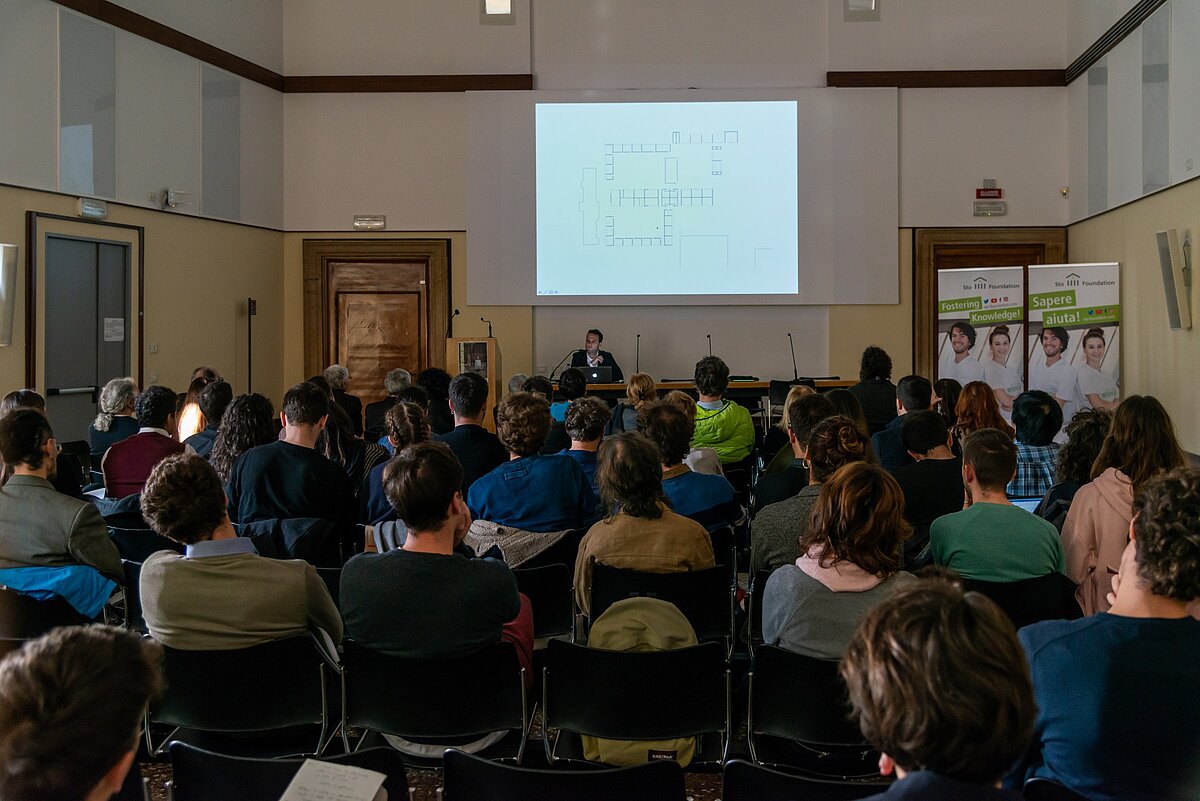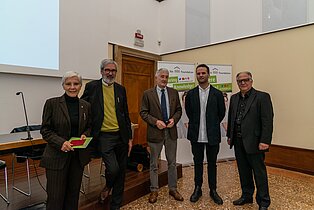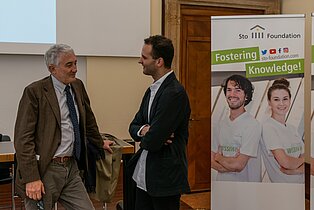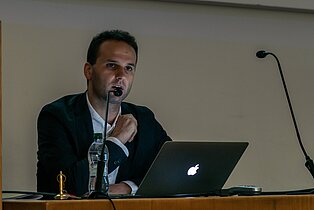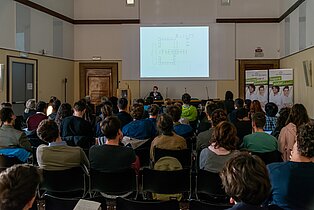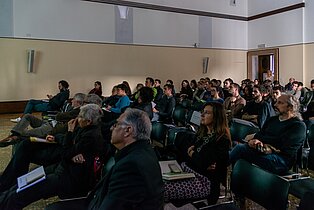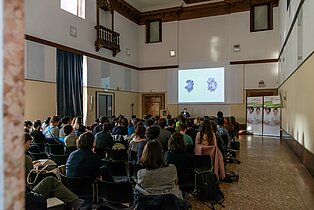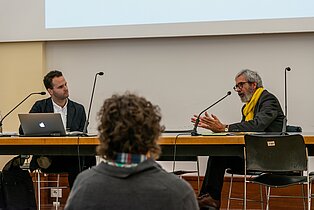Review | Guillermo Hevia Garcia at the November Talks 2019 in Venice
Guillermo Hevia García is a Chilean architect trained at the Pontificia Universidad Católica de Chile. His professional and experimental works are concerned with the relationship between Art and Architecture.
He presents a collection of interests, obsessions, images, objects, memories, from whose relationships projects emerge. His attempt to translate this inventory of images materializes by using planimetric drawing and axonometries exploring system, scale models, construction prototypes, in order to create project full of contents.
His speech deals with three sub-themes that he analyzes through a relational-procedural discussion over his projects.
Miscellaneous experiments
The renewal of the Jean Mermoz School in Curico, Chile (2012), is based on three different scales. The first one is the concept of patios as fundamental experience of sharing, and key element to the design. The second scale is changing radically the volume of the building by its metal wrapping which renews the complex while leaving it recognizable. The third and last scale is the integration of elements related to the human body such as colors.
“La grilla y el archipiélago” (2016) discloses a different scale: it is a housing model based on an open system of grouping and growth adaptable to different contexts and sites. The ground floor, an open public space with equal proportions between constructed parts and voids, is vertically connected to four-storey buildings where the space for sharing experience is hinted to by the use of open space.
“Aceros Chile Service Buildings, Living Bunkers”(2017) draws inspiration from the bunkers of the Atlantic Wall of the Second World War, used as archetypes for the creation of the spaces of Aceros Chile S.A., by moving and decontextualizing a series of values and design strategies of the bunkers, into a new construction – these monolithic, monomaterial and massive buildings, of heavy concrete and with great thicknesses, are arranged along a highway, in a context devoid of urban life, interest, and hostile by the scale of neighboring infrastructures; the volumes are closed to the outside as much as possible, turning the spaces towards a measured interior, based on small courtyards that function as an oasis for natural lighting and ventilation.
Another function is the one of the patio built for the Lollapalooza Pavilion in Santiago: “Inverted Dome” (2018) is a large scale installation that raises awareness of ocean plastic pollution made by the repetition of a unique piece (the wooden piles running all over the coasts), which supports a fishing net full of plastic, creating a unique strange atmosphere.
Living structures
The private buildings that Guillermo Hevia designs near Lago Ranco draw inspiration from German wooden shed with exposed structure: so the concept of exoskeleton marks the beginning of his research.
The first house has a square plan and is built around a patio, surrounded by trees, overlooking the lake. Three sides of the building have bedrooms with their bathrooms, while the fourth contains a large open space onto which the places of sharing domestic life face.
The second is closer to the beach and has a longitudinal layout with a large terrace located in the central part of the building.
The third building, a two-story house, will host collective functions at the first floor, with access from a private bridge; the bedrooms will be on the ground floor. The system of openings towards the outside denotes the different functions of the plan.
New possibilities of living experiences
“The woods“ (2013) inaugurates the architect’s reasoning on the role of experience in architecture. The project is a tribute to the Chilean forest and draws formal inspiration from various sources, such as Brian Nash Gill’s prints of tree sections, and the curves in Mies van der Rohe‘s project for a glass skyscraper and in Alvar Aalto’s vases.
The project for a pavilion located in Parque Araucano in Santiago, inspired by the film “The lady from Shanghai”, creates an interaction with park users through specular curves that generate multiplication and deformation of people and the surrounding environment, as an alienation experience. “Your reflection” (2015-16) is an almost invisible mirror, mimicking the natural/artificial landscape of the park.
The evolution is “Species of spaces” (2017), a small living space for refugees based on two-dimensional elements that build a unitary space through curves, manipulation of the geometry of the forms that culminates in the experience of space.
At the end of the conference, the usage of references taken from different disciplines is explained by Guillermo Hevia as part of the background that the architect draws immediately and consciously in the act of design: pieces of a collage finding their sequence in the final montage.
Interview-Video
Guillermo Hevia Garcia spoke about his philosophy and his lecture at the IUAV Venice.


